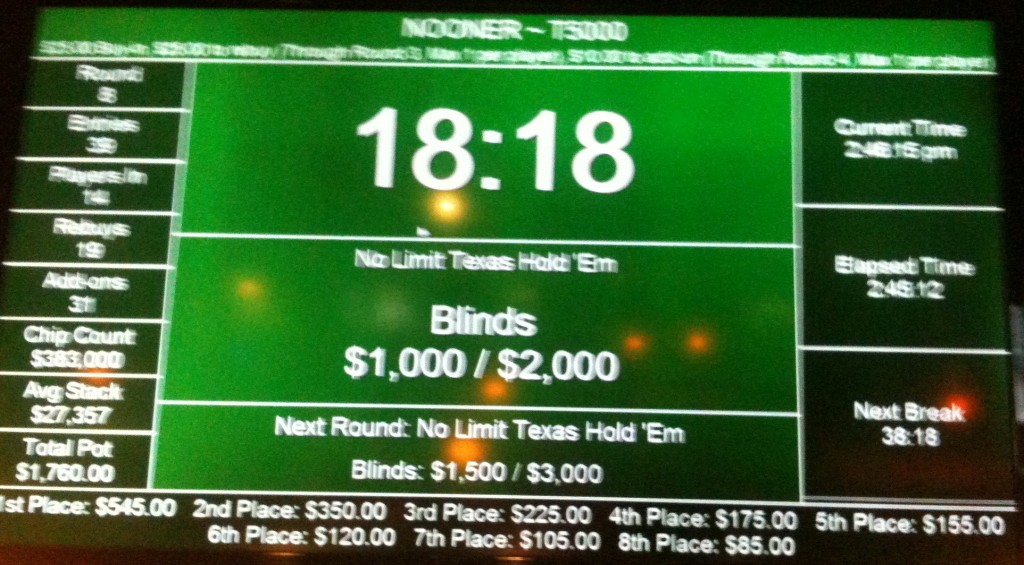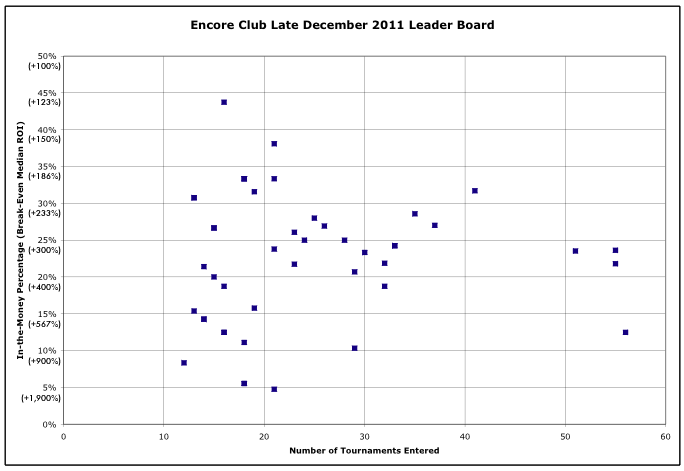The last couple of days have been a mixture of frustration and a feeling that maybe I’m breaking through a couple of barriers.
I didn’t play much on Wednesday. A $1K guarantee on Cake that didn’t last long, a bounty tournament where I fell out short of the money after making it to chip leader (but where I mitigated somewhat with a couple of bounties), and a shot at an Irish Open Quarter-Final Satellite that went bust.
Then, Thursday, I was atypically playing two tournaments simultaneously: another Irish Open QFS and a $1K guarantee. Personally, I like to concentrate on how the hands play out—even if I’ve folded—so that I can see what the other players are doing, and having two or more games running is too distracting.
I was managing to hold my own, though. The satellite had been running for 45 minutes and I’d been nearly busted out but worked my way back into the thick of things. We were 19 hands into the guarantee and I was about double my starting stack. Then Cake froze up. I left the client open for more than an hour, tested connectivity from another computer (in case it was my internal network, but I had no problems with Full Tilt or PokerStars). Even the web site was unavailable for a while. Once things got back up and running, my two games were gone, but there were a couple of small tournament awards in my cashier history and it looked like my buy-ins had been refunded. No announcement of what they’d done to resolve the technical glitch in Curaçao.
I switched over to Full Tilt for a bit and entered a Super Satellite to the WPT Bay 101 Shooting Star Main Event, which had a qualifier playing last night. I didn’t do any better than 13th of 32. Going directly to a satellite was even worse: 15th of 18. Then again, I realized after I’d started playing that I’ve got a pretty big commitment the weekend after the tournament and in the very unlikely event I was to win a seat, I was going to be flaking out on something important just to play poker. And you wouldn’t ever want to do that.
I lasted about an hour in The Ferguson, but was somewhat distracted because I was—for the second time in a day— playing dual tournaments. Half an hour in I entered a $10K guarantee Rush tournament. The last couple of times I’d played the tournaments I’d seemed to have gotten a feel for how to play it, not using PokerTracker or my own tools. For a while, both games were running relatively well, but I ended up all-in in The Ferguson with A♦ 2♦ on a board of 3♣ 4♠ 2♣ only to run into a flopped straight with 5♦ 6♦ (which also surprised the original all-in who had 3♠ 3♥). No backdoor aces on the board for me, but 1,001st (of 2,159) place let me concentrate on the Rush game with a bit larger buy-in.
The game progressed more or less on a steady build. There was one big chunk taken out about hand 170 when my T♥ A♣ made top pair but pocket kings took the day (the third player in the hand, with A♦ T♦ was surprised , as well, but I wasn’t all-in). A graph of my chip total shows a couple of sharp notches in the line at hands 260 and 280 as well but in both cases I recovered to nearly my previous position within a few hands. K♣ A♣ tripled me up at one point against Q♠ K♠ when two players called my all-in and a K♥ was the first card on the flop. Another time I caught A♣ 2♦ A♠ on the flop to trip up my T♦ A♥ against K♣ K♦, which doubled my chip stack.
A min raise at 300/600/75 from a player in the UTG+2 position in hand 325 prompted me to call from the big blind with K♠ 2♦ after everyone else had folded. The flop of 2♥ 7♥ 8♦ gave me at least a pair, and as he’d had several stacks of equal or greater size following him when he raised (with 21K to my 17K) it seemed unlikely that he’d have gone with anything in that range. I bet another 1,200 and he called. A 3♦ turned and I checked to see what he’d do, still thinking he was probably unconnected to any of it. He bet 2,400, I called, and the river rolled out K♣. No flushes or straights possible. Nothing that could make a full house. I had the top pair and bottom pair. He didn’t seem aggressive enough to have been holding kings himself or a pocket pair that matched the board. I checked to see what he’d do and he went all-in. I called and won 34K when he showed J♠ Q♥.
I couldn’t have gone out on a better hand, although it would have been better not to go out. It was 400/800/100 on hand 354. I got A♦ A♠ on the button. UTG+1 made the call and I min-raised to 1,600 (I should really have pushed harder). The blinds dropped out and UTG+1 called, putting us heads-up. The flop was 7♣ Q♠ 2♥, there was 5,300 in the pot, I had 27K against his 43K. He checked; I bet 2,500. He raised to 5,555, I went all-in, he called. He shows Q♣ J♣ for the lower pair. 58,808 in the pot and the turn card’s 5♥. He needs one of the jacks or another queen. And that’s what shows up on the river: Q♦. I go out of the tournament in 41st (of 1,062) with an ROI of 170% (he makes it to 16th).
Another $1K guarantee at Cake rounds out this account. No steady climb this. An hour into the tournament I was back at “GO” (i.e. 1,500 chips) but then things took off an in about 20 hands I was over 12K and racing down to the cash. Some laydown I made to avoid getting knocked out before the bubble took me down but a couple of helpful ace hands pushed me back up. A set of threes beat pocket fours to put me back in long enough to take 11th and an ROI of 176%.



